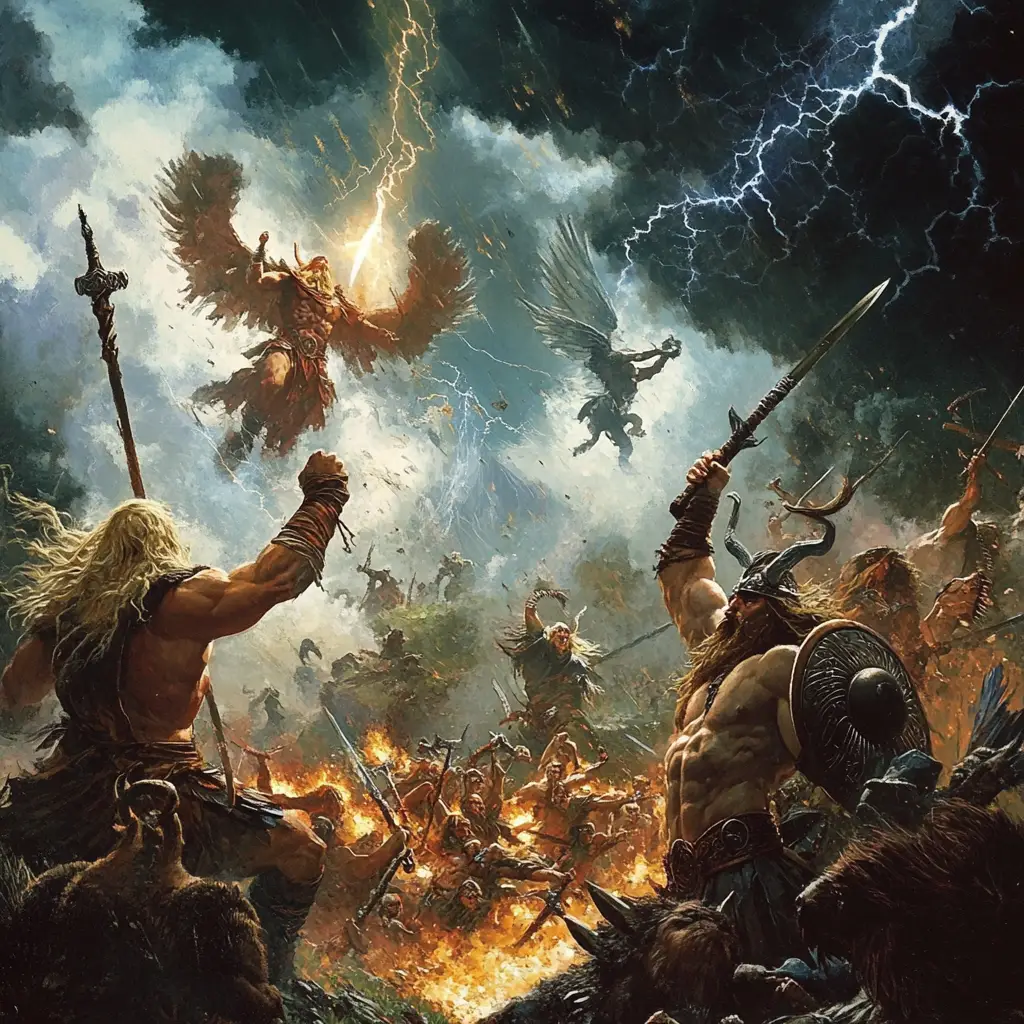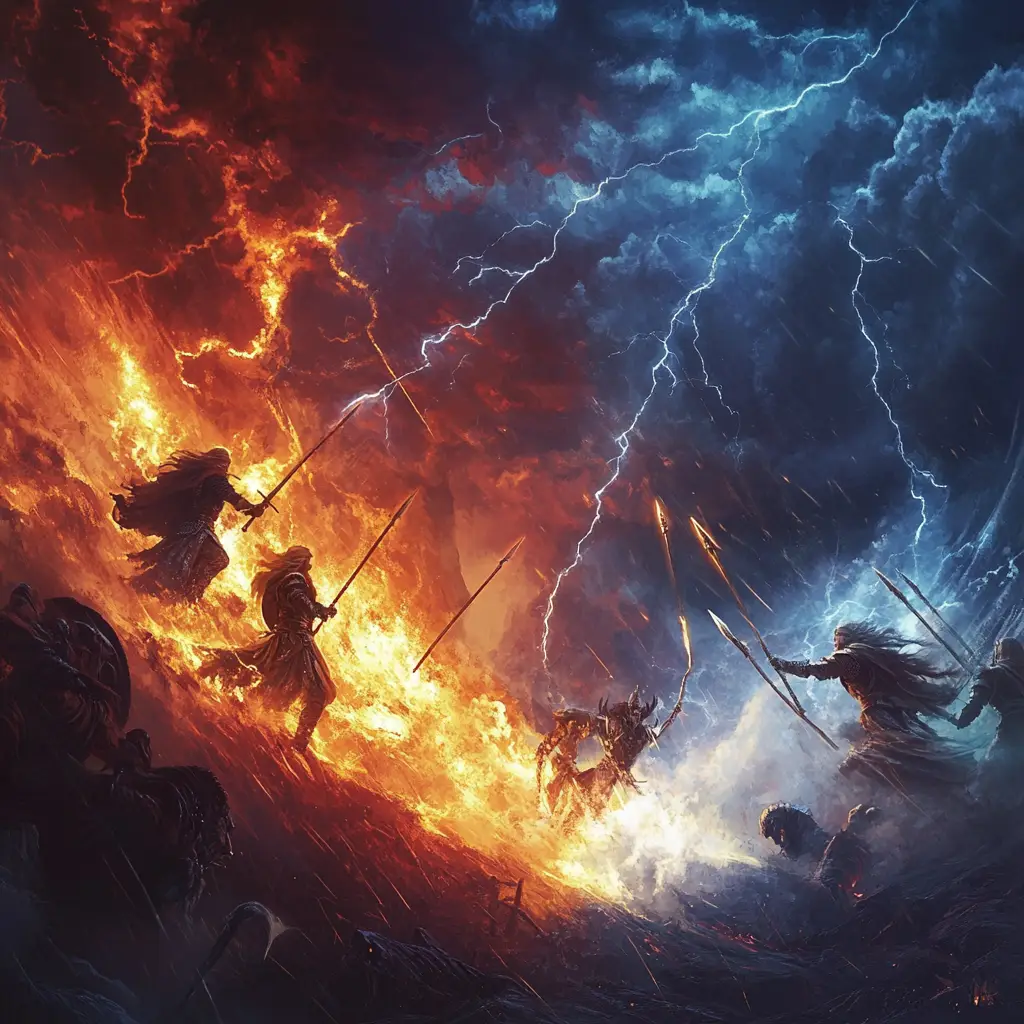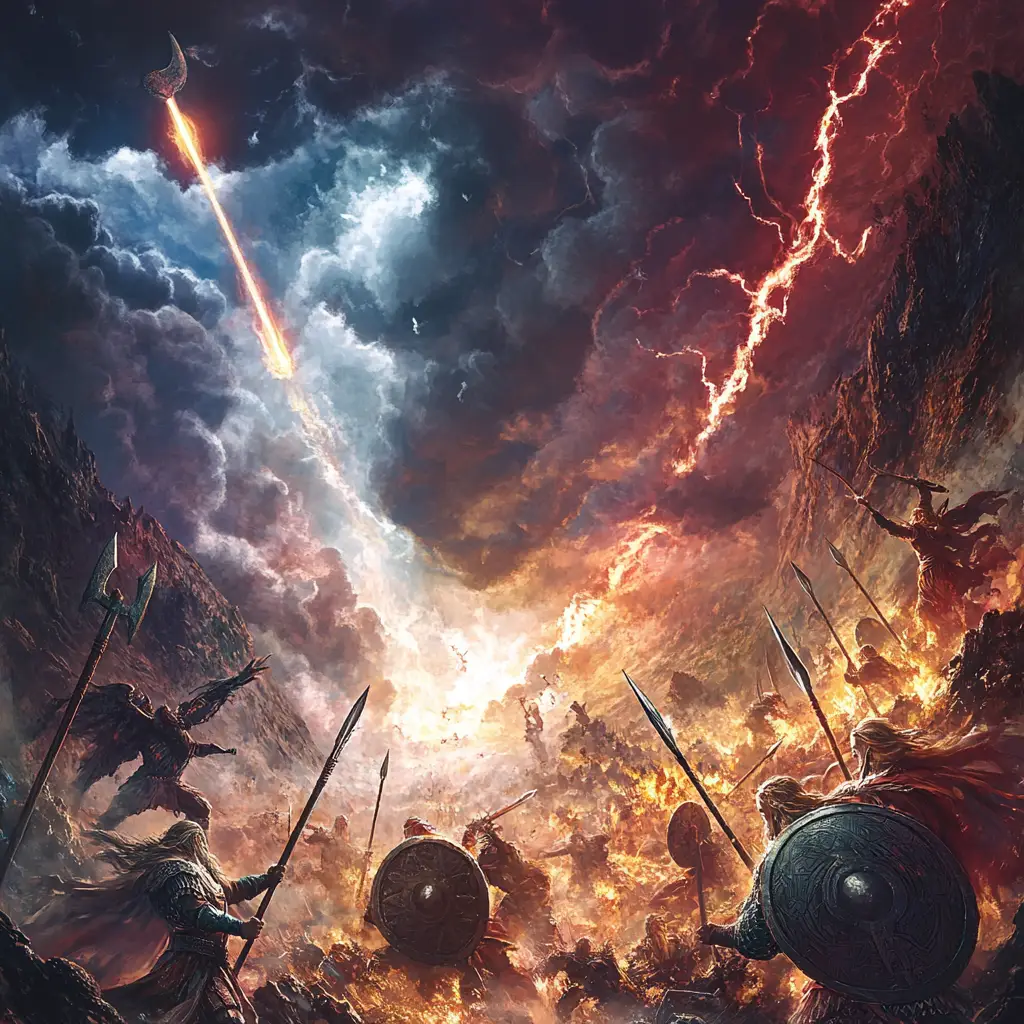The Aesir-Vanir War is one of the most significant events in Norse mythology, symbolizing a cosmic conflict between two groups of gods: the Aesir and the Vanir. The war reflects themes of power, harmony, and integration between opposing forces in the mythological world. Although details are sparse in the surviving texts, the story underscores the tension and eventual reconciliation between these divine tribes.
Who Are the Aesir and Vanir?
The Aesir: Gods associated with power, war, and order. Key members include Odin, Thor, Frigg, and Tyr.
The Vanir: Gods associated with fertility, prosperity, nature, and seiðr (sorcery). Key members include Njord, Freyja, and Freyr.
The Aesir represents martial strength and societal order, while the Vanir symbolise harmony with nature and the cycles of life. These differences set the stage for conflict.
Origins of the War
The war began with an incident involving Gullveig, a mysterious figure often associated with greed, gold, and magic. She came to Asgard and enchanted the Aesir with her knowledge of wealth and sorcery. However, her influence was seen as disruptive:
The Aesir burned Gullveig three times, but she was reborn after each attempt.
This act of violence enraged the Vanir, who considered it an affront and declared war on the Aesir.
The war may symbolize the clash between different values—materialism and nature, order and chaos, or physical might and mystical wisdom.
The War
The Aesir-Vanir War was a long and destructive conflict. While exact accounts of the battles are not detailed in surviving texts, it is described as a war of immense scale, involving the gods’ powers and the use of sorcery.
The Aesir relied on their strength, strategy, and dominance in battle.
The Vanir utilized their expertise in seiðr (a type of magic involving prophecy and manipulation of fate) and their connection to natural forces.
The war was evenly matched, with neither side able to claim total victory. This balance reflects the equal importance of both the Aesir and Vanir’s realms of influence in the Norse cosmological order.
The Truce
Recognizing the futility of prolonged conflict, the Aesir and Vanir agreed to a truce, which involved:
Exchange of Hostages:
The Vanir sent Njord, Freyja, and Freyr to Asgard to live among the Aesir.
The Aesir sent Hoenir (a god associated with leadership) and Mimir (known for his great wisdom) to the Vanir.
The Vanir later became upset when they realized Hoenir was indecisive without Mimir’s guidance, leading them to behead Mimir and send his head back to the Aesir. Odin preserved Mimir’s head with magic to continue receiving his counsel.
Spitting in a Cauldron:
As a symbol of unity, both groups spat into a cauldron. From this act, they created Kvasir, a being of immense wisdom who would later be killed, and his blood turned into the Mead of Poetry.
Aftermath and Legacy
The truce led to the Vanir becoming part of the Aesir pantheon, and their values and powers were incorporated into the broader Norse cosmology. Freyja, Freyr, and Njord became important gods in the Norse tradition, representing fertility, prosperity, and seafaring.
The Aesir-Vanir War also set the stage for other mythological events, such as Odin’s mastery of seiðr magic and the eventual fall of the gods during Ragnarök. The tale of the war reflects the cyclical nature of conflict and resolution, a recurring theme in Norse mythology.


